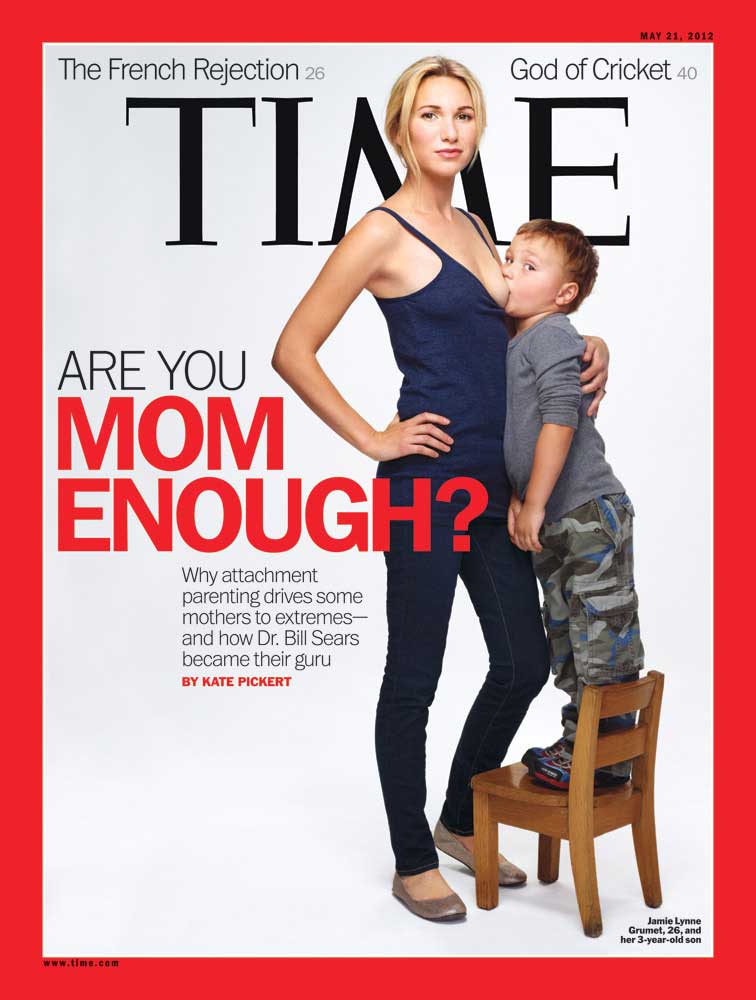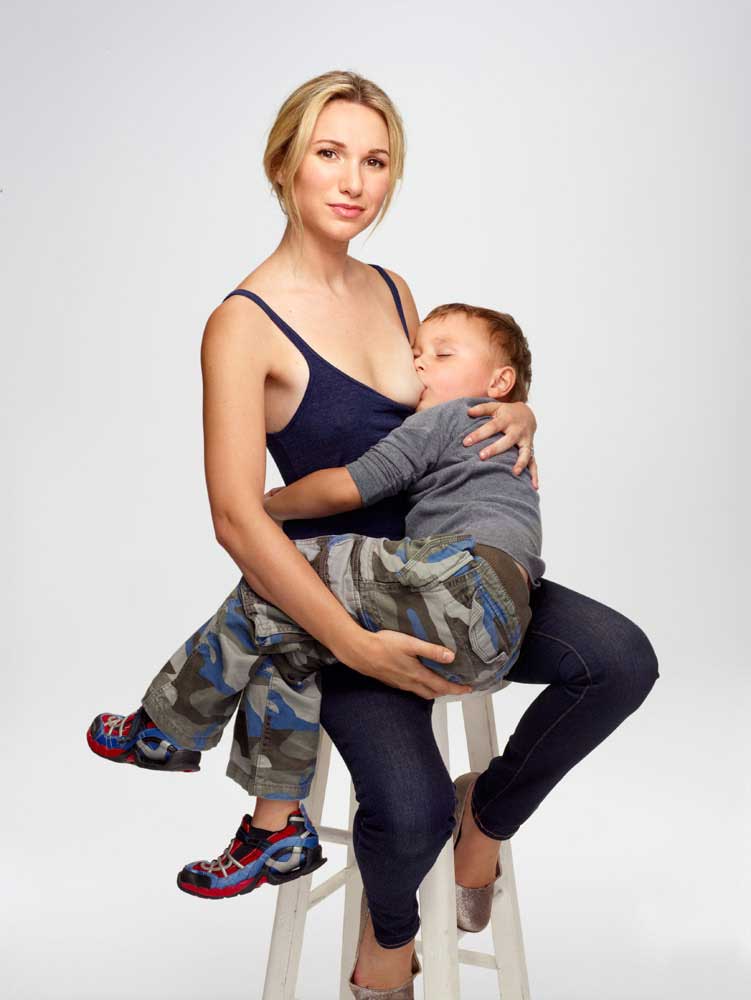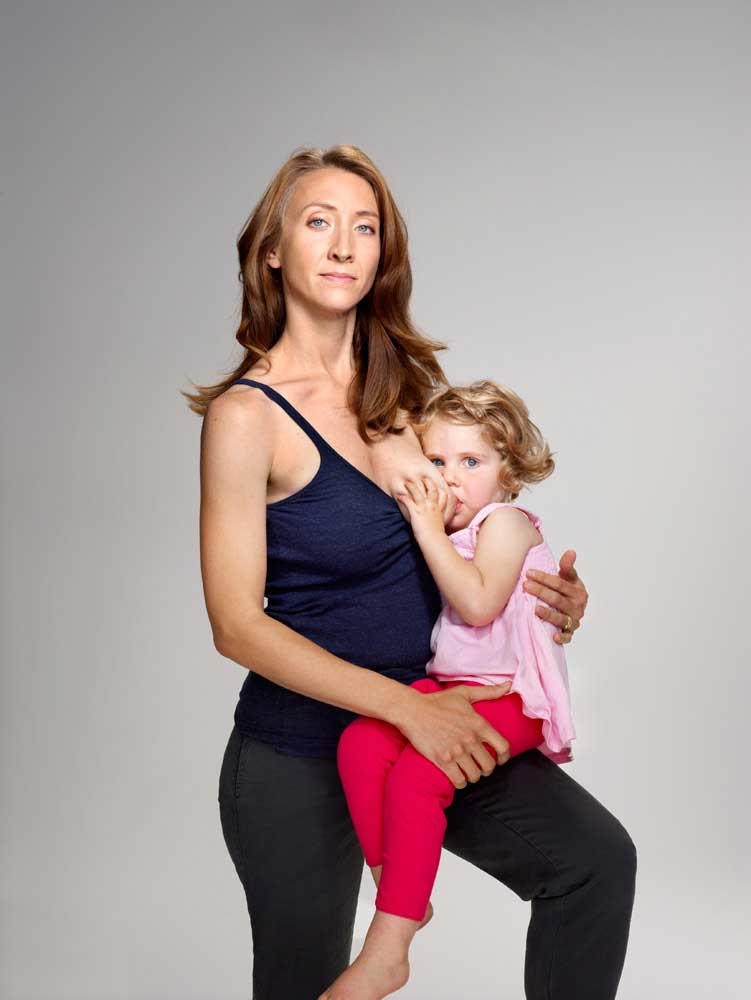
The subjects on this week’s TIME cover aren’t models in pose. Jamie Lynne Grumet, photographed by Martin Schoeller with her 3-year-old son, is a mother from Los Angeles who subscribes to attachment parenting, the subject of staff writer Kate Pickert’s cover story. Attachment parenting has been on the rise over the past two decades, since the publication of The Baby Book by Dr. Bill Sears and his wife Martha in 1992. Its three main tenets are extended breast-feeding, co-sleeping and “baby wearing,” in which infants are physically attached to their parents by slings.

In one day, Schoeller photographed four families from across the country who practice this method of motherhood. Using religious images of the Madonna and Child as reference, Schoeller captured each mother breast-feeding her child or children. “When you think of breast-feeding, you think of mothers holding their children, which was impossible with some of these older kids,” Schoeller says. “I liked the idea of having the kids standing up to underline the point that this was an uncommon situation.”
The four mothers photographed by Schoeller were all familiar with The Baby Book but said they had adopted the parenting philosophy for their own reasons. For Grumet, the decision was a natural extension of how she had been raised; she was the daughter of attached parents, and her older sister practices the method as well. “I grew up this way and never thought about raising my kids differently,” she says.
More from TIME
While pregnant, Dionna Ford, who lives in Kansas City, Mo., watched a video of a British woman breast-feeding her 7-year-old daughter. Ford thought she could never do the same — until she discovered how difficult it was to wean her son off breast milk. “After six months, I decided I’d wait until he turned 1,” she says. “But after my baby turned a year old, he was still a baby — not talking, barely walking — and I wondered why I’d stop now.”
Capturing various attached parents — and their reasons for attachment parenting — was Schoeller’s biggest goal for the sitting. “It was important to show that there’s no stereotypical look for a mom who practices this kind of parenting,” Schoeller says.
MORE: Cover Story: The Man Who Remade Motherhood






More Must-Reads from TIME
- Cybersecurity Experts Are Sounding the Alarm on DOGE
- Meet the 2025 Women of the Year
- The Harsh Truth About Disability Inclusion
- Why Do More Young Adults Have Cancer?
- Colman Domingo Leads With Radical Love
- How to Get Better at Doing Things Alone
- Michelle Zauner Stares Down the Darkness
Contact us at letters@time.com